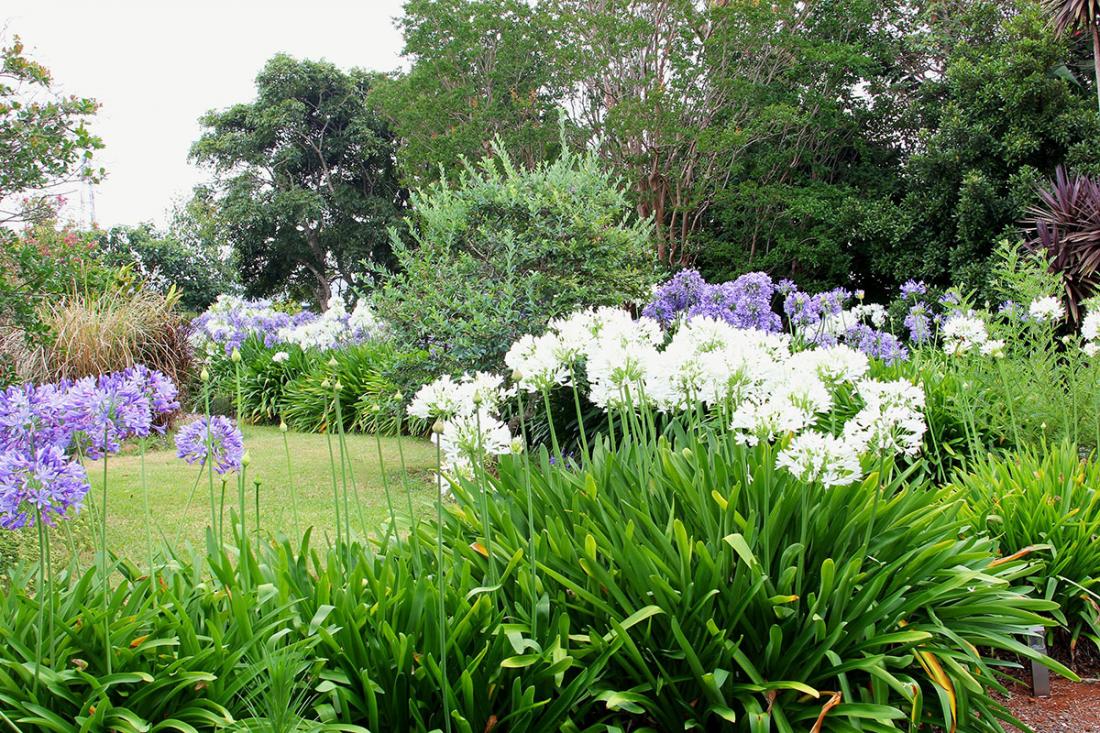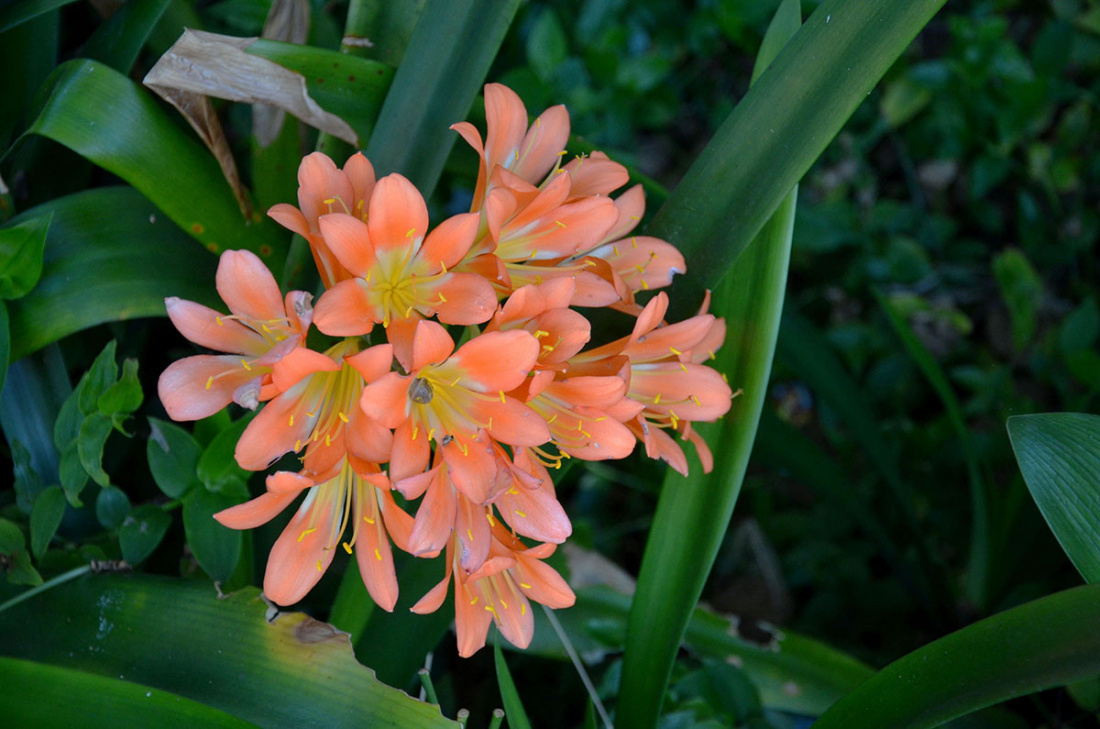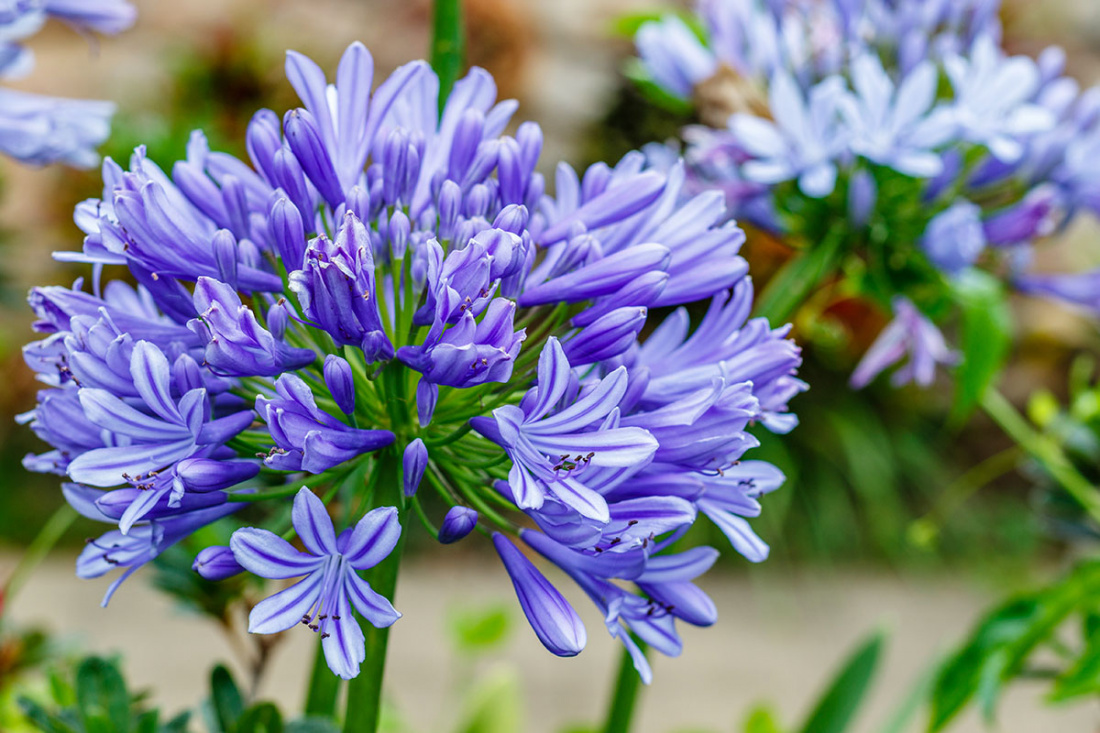
Growing Agapanthus
Agapanthus, often known as Lily of the Nile, is a much-loved garden perennial that can bring various colors, styles, and textures to your landscape. This easy to grow flower is relatively hardy and, once established, needs only the occasional watering. Many gardeners wonder how to grow agapanthus from a bulb.
Growing agapanthus from bulbs is a matter of preparation and timings. Agapanthus bulbs should be planted in spring when the chance of frost has passed. Soil preparation is also key to starting agapanthus from bulbs. Your soil should be well-drained, and your bulbs will need full sun to perform best. Many varieties of agapanthus will thrive in containers.
If you want to add color to your landscape, you won’t go wrong by planting various agapanthus bulbs in your beds. We’ll explain this plant's needs for soil, nutrition, sunlight, and maintenance so you can be successful.
Where Can Agapanthus be Grown – Origins are Important
Agapanthus is often known as African Lily and is native to South Africa. The climate of South Africa varies. Agapanthus adaptability to almost any growing zone attests to its native climate. In the US, agapanthus will do well in growing zones 8 – 11. With a bit of care, some agapanthus varieties can be grown in hardiness zones 6 and 7.
Further north in the United States, agapanthus should be grown in pots or containers that can be moved indoors during the winter months to protect the roots from freezing. In areas where winters are more moderate, protecting the agapanthus roots with a deep mulch layer is usually adequate.
Get a Good Start – Choose Healthy Bulbs
You must choose the best bulbs possible for your landscape. There are some things to look for when selecting bulbs.
- Buy from reputable dealers and growers.
- Buy individual bulbs rather than packaged bulbs. Buying individual bulbs allow you to examine each bulb to ensure that the bulb is healthy and viable.
- Bulbs should be firm and without any visible mold or mildew growth.
Trading and sharing is a great way to get your agapanthus bulbs. Most gardeners who divide their plants are happy to share bulbs. Finding a network of agapanthus devotees can be a wonderful way to make new friends and find beautiful new varieties.


Provide a Good Home – Soil Preparation Before Planting
Soil preparation is a fundamental part of any landscaping or gardening project. It is no less so for agapanthus. Remember that the soil is not just supporting material to hold the plant. The soil is a rich environment that is alive with microscopic life necessary for your plants' health.
Building Good Soil – Back to Basics
Agapanthus need well-drained soil that is rich in organic material. While soil moisture is important to most plants, agapanthus prefers not to have their feet sloppy wet. The agapanthus root system's fleshy nature tends to make it vulnerable to root rot if the ground stays too damp.
If your garden or landscape soil is heavy or contains a lot of clay, amend your soil by adding
- Finished compost
- Lava sand
- Green sand
- Decomposed granite
- Worm castings
These amendments are available at most nurseries. In extremely heavy or clay soils, add the amendments in this ratio.
- Add 3 to 5 inches of finished compost to the top of your landscape beds
- Mix in rock minerals such as green sand, lava sand, or decomposed granite at ten pounds per 100 square feet
- A light application of worm castings at two pounds per 100 square feet adds useful microscopic life to the soil
Till the amendments into your landscape soil lightly using a garden fork or small powered tiller. It would be best if you were careful not to go too deep into the soil with the tilling

Location, Location, Location – The Sun Is Your Guide
Most varieties of agapanthus thrive in full sun. Select a place in your landscape that receives at least 4 to 6 hours of direct sunlight each day. Many gardeners think that the morning sun is best. However, your agapanthus will do well anywhere they receive direct sunlight.
Some varieties of agapanthus can do well in partial shade. However, agapanthus cannot tolerate full shade and will not survive.
Planting your Agapanthus Bulbs – Not too Deep and Not too Shallow
Some varieties of agapanthus are a little particular about planting after dividing. In general, the recommended planting strategies are:
- Dig your holes two to three inches deeper than the overall length of your bulb. The bulb should be covered by at least two inches of soil when it is in the ground.
- Plant your bulbs with the crown pointing up
- Pack the soil firmly around the bulb but don’t compact it tightly
- Water your bulbs thoroughly after planting
- Space your bulbs about 18 to 24 inches apart in your landscape
What to Expect and When
Every gardener knows the feeling of waiting for those first sprouts to appear in the spring after planting. The one factor that controls when this will happen is soil temperature.
Your agapanthus bulbs won’t start to sprout until after the soil begins to warm in spring. Typically, soil temperatures will be above 55 to 60 degrees before your agapanthus shows shoots above ground. When this happens is dependent on your growing zone and can vary from year to year.

Agapanthus Care and Maintenance
Once your agapanthus begins to grow actively, it is time to spread a little love on them. Literally, you should spread some plant food around your plants to encourage their growth. The early growth stages of your agapanthus are when they require the most care. Once established, agapanthus is relatively hardy and drought tolerant to some degree.
Encouraging your Young Agapanthus
Until your agapanthus is established, you should:
- Water regularly. Agapanthus need at least one inch of water per week. If you don’t get natural rainfall in this amount, you must provide enough water to make up the needed one inch.
- Feed your young plants regularly. Almost any good plant food for flowering plants will benefit your agapanthus. Don’t apply fertilizers that are too rich in nitrogen. Nitrogen promotes green plant growth and can inhibit flowering
- Feeding is especially crucial when agapanthus are grown in pots. The pot should not be too large. Root restriction encourages flowering when agapanthus is grown in containers.
Care and Maintenance of Established Agapanthus – Keeping the Healthy and Happy
Once your agapanthus is well established, usually the second year, their need for special attention is drastically reduced. In general, you can adopt a care and maintenance schedule something like this.
- Continue to water to provide at least ¾ of an inch of water per week.
- Feed your agapanthus once a month using a high-quality plant food for flowering plants
- Remove flowers once they have bloomed and start to fade. Dead-heading will encourage more flowering.
- In the fall, trim your agapanthus back to ground level.
- In areas prone to hard freezes, add extra mulch over your agapanthus to protect the roots from frostbite
- When your agapanthus plants become too large, divide the roots and share the bulbs with your gardening friends. Agapanthus usually won’t need to be divided until after the second year.
Once you have agapanthus established in your landscape, you may find yourself with a mild addiction. All too often, you will notice other varieties with different colors and new flowering types. Many first time growers of agapanthus end up with a passion for this beautiful flower and begin collecting and trading bulbs.


